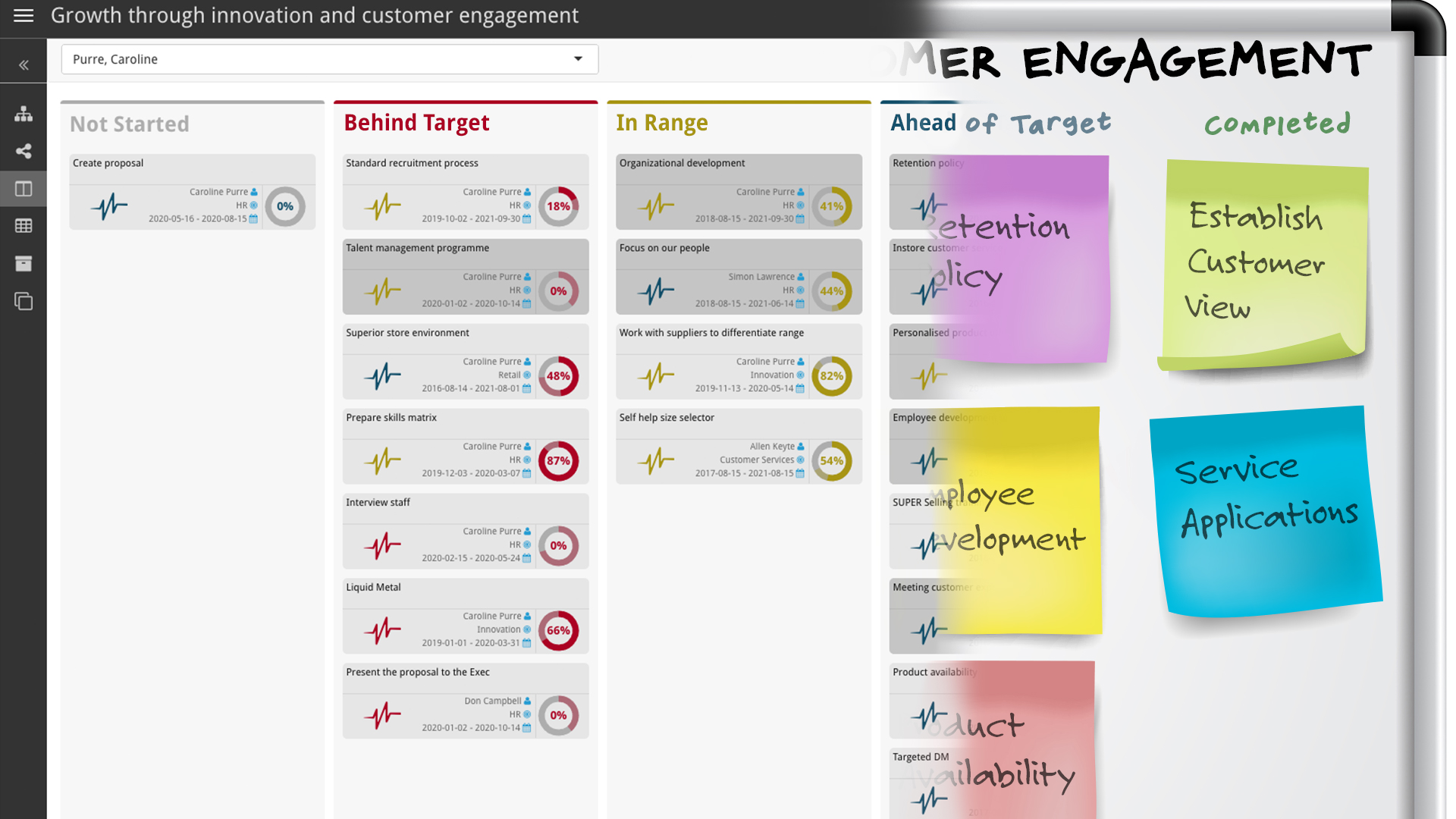StrategyBlocks Releases the Kanban Blocks Board
A brief history of Kanban
“Kanban” is a Japanese word, it means “signboard” and we often see it implemented as columns of stacked Post-it notes on an office window. Its origins can be traced back to the ’40s where Toyota developed a system to manage the production process in its manufacturing facilities. It took another 30 years before it started to gain traction outside of Japan. It is interesting to note that it is closely related to another Japanese management principle called Hoshin Kanri, a form of goal deployment. Hoshin planning has been a guiding principle for StrategyBlocks since the product was first developed. Hoshin recognizes the expertise of people and teams, it encourages positive accountability and drives strategic control.
Where Hoshin offers a “top-down” way of approaching strategy in StrategyBlocks, Kanban provides the means to monitor delivery “bottom-up”. There is no more reordering and reshuffling of sticky pieces of paper–StrategyBlocks constantly tracks delivery progress automatically updating the board and ensuring alignment to vision. All key aspects of the philosophy that forms Transformational Strategic Execution.
What is Kanban exactly
Kanban is a highly effective, base level, “at-a-glance” execution tool. It provides several key benefits:
- Visual signals – like other strategy maps within StrategyBlocks, it presents execution data in a highly visual way. We want to create an environment which animates and engages people and teams with the execution of strategy.
- Recognizing control – it displays information in the context of those who need and at the right level of detail.
- What and when – it displays information simply and clearly and directs attention to what needs to be dealt with now.
- Prioritization – the viewer can see exactly how job allocation is organized. Has it been started, is it behind target, in range, ahead of target or completed?
Why have we added Kanban to StrategyBlocks?
As we continue to develop and extend the functionality of StrategyBlocks, we have learned that there is no single view, or strategy map, that answers all the questions of different people in different parts of an organization. Therefore, we have created a series of visuals that serve different purposes but always maintain alignment to vision:
- High-level – the Spray Diagram offers a picture of the entire strategy on a single page and uses color to display the delivery status of entire branches of strategy.
- Medium-level – the Value Tree is a key operational, hierarchical view, and it focuses on a specific branch of strategy, always connecting to vision through line-of-sight.
- Low-level – the Timeline presents strategy in the context of time, ideal for team reviews allowing detailed filtering to draw attention to project level delivery.
- Base-level – now the Blocks Board (Kanban) provides a very practical and functional view for an individual to see what they are working on and what is the best use of their time.
It satisfies multiple needs for StrategyBlocks customers:
- For Managers – to gain insights into delivery at a department level involving many team members.
- For Individuals – understanding exactly where time is best invested, the ability to quickly submit progress reports and staying on track.
The challenges of remote monitoring
We work in unprecedented times, and business is changing more quickly than ever. It has never been more important to keep your organization focused on strategic vision and pivot strategically when you need to. But now we face the complexity of monitoring the health of strategic execution, across a remote workforce. Successful real-time communication of organizational direction is critical and philosophies like Kanban and Hoshin are key to transforming into a strategically agile business.




Leave A Comment